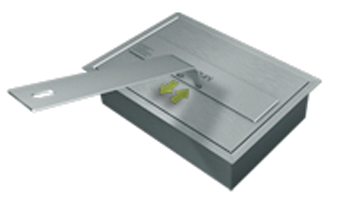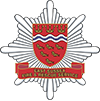Ethanol fireplaces are popular for their portability and lack of chimney. However, they are mainly decorative and don't generate enough heat to warm a house like a traditional stove.
Whether you own or plan to buy an ethanol fireplace, it's crucial to be aware of the fire hazards they can pose. These hazards typically involve three areas:
- Spilled fuel
- Fuelling a hot fireplace
- Overfilling the burner
While Bio Ethanol is not explosive, it is still highly flammable. Therefore filling and lighting the fireplace is where you want to be extra observant.
Spilling Bio Ethanol while fueling the fireplace
Ethanol fireplaces often have spills when refueling with bio ethanol, which behaves differently from water and is prone to spilling. Ignoring spilled fuel when lighting the fireplace can lead to a difficult-to-control flame.
Although there is no risk of sudden bursts of flames, the fuel can still harm the fireplace.
To prevent spills, use a funnel, and if any fuel spills, clean it up right away, ensuring no bio ethanol remains on your hands or lighter.
Fuelling a hot burner

It is important to avoid filling a hot burner with Bio Ethanol. When lighting Bio Ethanol, it is the fumes that ignite and burn, not the liquid itself.
Pouring Bio Ethanol into a hot burner increases the evaporation of the fuel, leading to more fumes. Consequently, lighting Bio Ethanol that has been poured into a hot burner can result in a burst flame.
To ensure safety, we always recommend following these four steps before refueling any ethanol fireplace.
1. Close the lid safely
2.Wait a minimum of 10 minutes before refuelling
3.Pour Bio Ethanol into the burner using a funnel
4.Check for any spilled fuel before lighting the fireplace
This prevents two risks:
- Fuelling a hot fireplace and causing burst flames
- Fuelling a fireplace that is still lit
Once a fireplace is running low on fuel, the flames tend to decrease in size. If it is dark, the flame might be hard to spot.
As a result, you risk assuming that the fireplace is extinguished and fuelling it when it really isn’t.
Naturally, this will cause a burst flame, and potentially ignite the fuel inside the bottle.
Remember that it won’t explode, but it is still a very dangerous situation that could have been avoided.
Overfilling the burner
The third danger is also about putting too much fuel in the burner.
Always follow the instructions in the manual for how much fuel to use. The amount can change, but usually, you should fill the burner up to 1 cm from the top. If you add too much fuel, the fire can get out of control and it can be hard to put out.
Even though most ethanol burners can handle the extra heat, if you bump into the lit burner , hot fuel might spill out and catch fire. Most approved ethanol burners have a special tray to stop this. Basically, the hot fuel gets caught in a safe spot and can't spill onto the floor or wall.
Conclusion
The three hazards underline what we always stress:
- Fuelling is the crucial point when it comes to safety.
- If you follow the guidelines provided by the manufacturer, the hazards are kept at an absolute minimum.
- Remember: With any live flame, there is a fire hazard. In the end, it is up to yourself to ensure that the flames are safely lit within your home.
